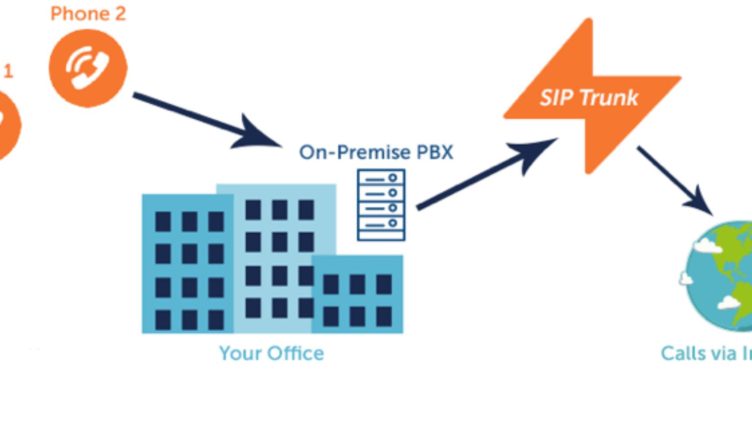SIP trunking (Session Initiation Protocol) and PRIs (Primary Rate Interfaces) are different methods to connect a Voice over Internet Protocol (VoIP) network to the Public Switched Telephone Network (PSTN).
PRI is becoming old technology as more organizations are recognizing the benefits of Voice Over IP technology and switching to SIP.
Legacy PRI (Primary Rate Interface) is circuit switched trunking that requires organizations to have a physical connection between their company and the service provider whereas SIP connects through an IP network. PRI is a digital circuit that provides 23 voice paths or channels as well as one signaling channel and connects directly to the PSTN so call quality is excellent.
Session Initiation Protocol (SIP) is a packet based application-layer control protocol that establishes, modifies and terminates calls or multimedia sessions over an IP network.
SIP addresses the signaling as well as session management functions within a packet telephony network. Signaling enables the call information to be carried over the network while session management provisions the ability to control all the call attributes. SIP sends your voice calls, emails, and data all over existing IP networks and delivered across a WAN.
SIP offers several advantages over traditional trunking systems. They facilitate cost savings by leveraging centralized SIP trunking to connect the IP phone systems in enterprises spread across various geographical locations. It also facilitates enhanced flexibility in purchasing and managing bandwidth. The IP based nature of SIP enables easier integration with unified communication applications such as instant messaging, collaboration and video conferencing.
From a high level perspective, the requirements for a SIP trunk line are:
- A provider offering Internet telephone or SIP-trunking service
- Router and Ethernet switch
- IP PBX
Reasons why SIP makes sense:
- ROI – You only use the bandwidth that you use. No heavy capital expenditures required. Maintains all the features of your local PBX. Enables reduction in call costs from a placing and receiving perspective.
- Allows for remote working and collaboration as it streamlines all communication whether it be voice, IM, Conference calls, etc. regardless of location through cloud based and on premise services.
- Since broadband is ubiquitous, your organization could leverage of that availability.
- Calls can be easily programmed to be routed to different extensions or mobile phones.
- You are able to scale based on business need instead of investing on an infrastructure that stays idle. A software configuration is all that is required to increase or decrease based on demand since the connections are virtual. Compare that to PRI where circuits are physically installed and termination hardware is required. In essence you require a whole PRI which has to be in 23 channel increments (actually have 24 channels per T1 but one is utilized as a data/control channel). In addition with PRI capacity has to be planned in advance as you have to call the phone company to install more service and hire a tech to install and commission new circuits and termination hardware in the PBX.
- Enables unified communication system that brings together data, presence, application sharing, voice and IM applications.
- It’s quite reliable and provides an enhanced user experience
- Cost is another factor. SIP billing is based on usage whereas PRI is calculated per circuit per month regardless of usage. SIP is also cheaper because provisioning could be done remotely instead of requiring an on premise call. If you need just 3-4 extra voice channels with PRI they could be ordered individually compared to PRI where you would have to order in fixed increments of 23 channels.
- As part of disaster recovery and continuity, SIP, since they are not physical installed onsite, enables you to reroute calls to other locations without missing a call. With PRI, diverting calls is possible but the process tends to be more complex and can entail high costs to do so.
- Very cheap to get local numbers from all around the world so it means total number portability to be able to choose any area code.
To summarize PRI provides voice communication over the phone network. SIP provides voice communication over the internet. SIP is deemed superior due to its cost, scalability, and flexibility. The big telephone companies are already pushing the government to phase out PRI within the next several years. SIP trunking makes sense if you have more than 20 users so that you benefit from its cost savings.
